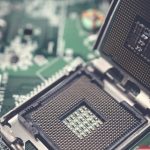Tesla is initiating the rollout of its latest Full Self-Driving (FSD) version 13 to a select group of users. The update, marked as software version 2024.39.10 and build FSD (Supervised) V13.2, promises enhanced autonomous driving capabilities. Early adopters are beginning to receive the update, which is expected to significantly improve the driving experience.
Tesla has previously released FSD updates that introduced incremental improvements, such as better lane keeping and obstacle avoidance. With FSD V13, the company aims to deliver more substantial enhancements, building on its existing autonomous driving framework.
What are the new features in FSD V13?
The FSD V13 update includes several upgrades. These feature 36 Hz, full-resolution AI4 video inputs, native AI4 inputs and neural network architectures, and 4.2x data scaling. Additionally, the update offers 5x training compute scaling enabled by the Cortex cluster and reduced photon-to-control latency by 2x. Users can also experience speed profiles on both city streets and highways, start FSD from park with a button, integrated unpark, reverse, and park capabilities, improved reward predictions for collision avoidance, better camera cleaning, a redesigned controller for smoother tracking, and dynamic routing around road closures.
How does FSD V13 differ from previous versions?
FSD V13 introduces significant technical improvements over its predecessors. The increase in data and compute scaling allows for more accurate and responsive driving behavior. Moreover, the enhanced latency reduction improves the system’s reaction time. Features like dynamic routing provide more reliable navigation by adjusting routes based on detected road closures, a functionality not present in earlier versions.
What improvements are planned for future updates?
Upcoming enhancements for FSD include 3x model size scaling, 3x model context length scaling, and the integration of audio inputs to better handle emergency vehicles. Additionally, there are plans to improve reward predictions for navigation, reduce false braking and slower driving in parking lots, support destination options like pulling over, parking in various locations, efficient representation of maps and navigation inputs, and enhanced handling of camera occlusions.
New brain who dis https://t.co/i8q8Wjfti6
This statement from Tesla AI highlights the advancements in their autonomous driving technologies included in the latest update.
With the Cybercab units showcased in Tesla’s recent event running near-production AI software anticipated for FSD V13, expectations for real-world performance are elevated. Users and industry experts are keen to observe how the system manages various driving scenarios and its overall reliability on public roads.
Advancements in FSD technology are crucial for the progression of autonomous vehicles. Tesla’s focus on reducing latency and enhancing data processing capabilities reflects a commitment to improving safety and efficiency. Potential users can benefit from these updates through more reliable and responsive driving assistance, paving the way for broader adoption of self-driving technologies.










